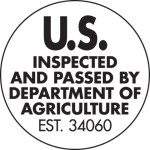Common Sources of Hidden Gluten
I spoke with a group of dietitians at the Northern Arizona Academy of Nutrition & Dietetics Spring Conference last week. My presentation topic was treating Irritable Bowel Syndrome (IBS) with the Low FODMAPs diet. While the Low FODMAPs diet is effective at managing the symptoms associated with IBS, the point I wanted to communicate is that IBS is a symptom of altered gut-brain connections, and that before we treat IBS we must get to the root of the problem.For people with celiac disease and gluten sensitivity, continued exposure to trace amounts of gluten can contribute to ongoing IBS, including gas, bloating, diarrhea, reflux, constipation, abdominal pain and/or distention, anxiety and/or depression. It is true that a low FODMAPs diet will help to alleviate many of these symptoms, but it is most important to first review the diet to ensure that no gluten is unexpectedly being consumed. One of the dietitians at the conference asked, "What are some of the surprising sources of gluten that people unknowingly eat?" Here's my response, but please note this is not an exhaustive list!! These are a few sources of hidden gluten that I hear repeatedly from with celiac and gluten sensitivity.Tricky Ingredients
- Autolyzed yeast extract and yeast extract. These flavoring ingredients may be derived from barley.
- Modified food starch, dextrin, seasonings and Worcestershire sauce in USDA-regulated foods. These ingredients could contain wheat and in USDA-regulated foods it is not required to disclose wheat on the food label. The USDA regulates meat, poultry, fish and egg products and can be identified by looking for a seal like these:


- Soy sauce and other Asian sauces. Soy sauce, and any sauce or marinade that contains soy sauce, contains wheat unless gluten-free soy sauce is used.
- Oats. Oats contain enough gluten from contamination during processing to be considered a gluten-containing food, unless you purchase gluten-free oats.
Kitchen
- Toaster. People eating gluten-free cannot share a toaster. To keep it gluten-free, use a new, clean toaster dedicated to gluten-free foods.
- Cutting boards. Gluten is a sticky protein that is difficult to wash off porous materials. Plastic and wooden cutting boards cannot be shared. To keep it gluten-free, use a new cutting board and use it for gluten-free foods only.
- Double dipping. No double dipping is the house rule, or opt for labeling "gluten-free" and "not gluten-free" jars of spreadable condiments, such as mayonnaise, natural nut butters and pickle relish.
Eating Out
- Salads. Salads greens often become contaminated with gluten when salads are prepared on shared lines with gluten-containing foods. To keep it gluten-free, ask for fresh salad greens that have not been out on the line.
- Grilled fish, chicken or steak. Foods grilled on a shared grill will become contaminated. Marinades often contain soy sauce, beer, Worcestershire sauce or seasonings that contain gluten and contaminate the grill. To keep it gluten-free, ask for a piece of foil to be put down on the grill where your gluten-free food is prepared.
- Corn tortillas. Sometimes corn tortillas have wheat flour added to them. Even 100% corn tortillas are not likely to have come from a gluten-free facility, which means that they are to be avoided. Additionally, restaurants often heat the tortillas on the same surface that they are heating the wheat flour tortillas. To keep it gluten-free, ask specific questions about the tortillas.
- Gluten-free pizza and pasta. Did you know that flour stays airborne for up to 12 hours? Which means that a restaurant, such as a pizza restaurant or an Italian restaurant that makes its own pasta, that actively uses wheat flour poses a high risk for gluten exposure. To keep it gluten-free, avoid these restaurants, or, opt to enjoy your friends and family rather than risky foods and don't order anything. Or, talk with the chef or manager about menu items that are prepared in areas of the kitchen farthest from the part of the kitchen where wheat flour is in active use. You can also inquire about menu items that are prepared earlier in the day, or at times when wheat flour is not actively being used.
- Sushi. Imitation crab contains gluten. Many sushi rolls contain imitation crab. To keep it gluten-free, ask for real crab and ask for accommodations to be made to avoid contact with imitation crab when your sushi is being prepared.
At Home
- Medications and supplements. Be sure that all medications and supplements are gluten-free. This often means contacting the manufacturer. Items from gluten-free facilities are best.
A gluten-free lifestyle is complex and takes time to learn. Please contact me with questions you have.Please post your experiences on this blog so that others can learn from you. Where did you unexpectedly find gluten in your diet?Material on this blog is provided for informational purposes only. It is general information that may not apply to you as an individual, and is not a substitute for personalized nutrition or health advice or healthcare. Never disregard medical advice or delay seeking medical care because of something you have read or accessed through this website.